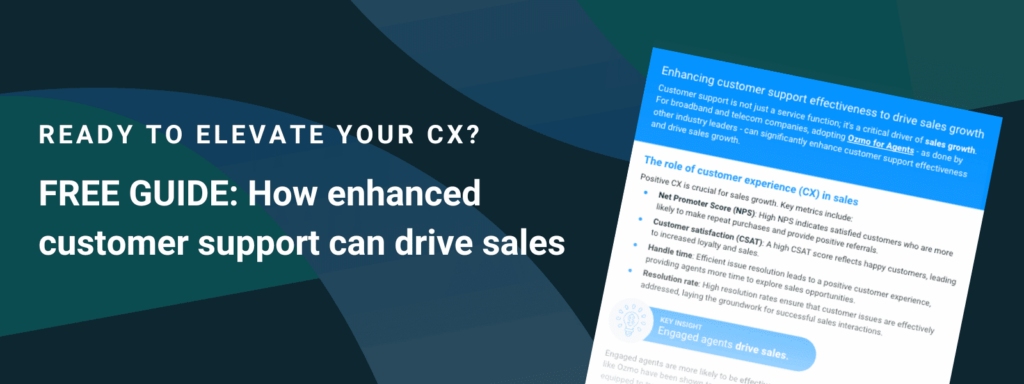The onboarding process is your company’s first impression for your customers. You want it to be a good one.
Yet, according to a survey by Wyzowl, nine out of 10 customers say companies aren’t doing enough to create a good onboarding experience. But there is good news: the same survey found that 86% of customers are willing to stay loyal to businesses that invest in creating quality onboarding content.
We want to help you do just that. Below, we go over why the customer onboarding process matters and the steps you can take to build a better onboarding program.
Why the customer onboarding experience matters
Creating a smooth onboarding experience is vital to any customer retention strategy. Your customer onboarding process is your first impression and sets the tone for your relationship with the customer.
If your onboarding takes longer than 20 minutes, 70% of customers will abandon the process. Additionally, research has found that acquiring new customers to replace those who leave can cost as much as 25 times more than retaining your current customer base.
That’s why it’s critical to ensure your company takes the time to create a fast and easy onboarding experience. By prioritizing the onboarding process, you create happy customers and improve your company’s bottom line—a win-win.
Looking to effectively onboard your customers? Read our full guide below.
How to improve the customer onboarding process
Now that you know how critical the onboarding experience is to improving customer retention, how do you get started? Below are a few tips to help you nail the customer onboarding experience.
Create a solid welcome package
One important first step you can take to ensure a positive onboarding experience is to create a solid welcome package.
Make sure to set customer expectations for the onboarding process. Additionally, make it easy for customers to get the support they need if they have questions or need help troubleshooting potential issues. For example, provide the number for your contact center or a QR code that takes them to a customer self-service hub.
Offer personalized customer service
Did you know that three-fourths of customers expect businesses to provide personalized customer service experiences? That means that if your business isn’t prioritizing personalization, it’s already behind.
So, how can you create the personalized experience your customers crave? One step you might take is offering interactive tutorials in the customer’s preferred language. For example, a customer in Montréal might prefer to view set-up tutorials in French instead of English.
Consider implementing live video support to create a more tailored customer service experience. Taking the time to craft a more personalized experience can help your company increase profits, improve customer satisfaction and reduce expensive truck rolls.
Develop a customer self-service strategy
Customer self-service is no longer a nice-to-have but a must-have for any successful telecom or broadband business. 88% of customers expect you to provide customer self-service options. However, at the same time, more than two-thirds say they can’t resolve issues using their company’s current self-serve offerings.
This creates a unique opportunity for your business to stand out. With self-serve tech support, customers can skip the call center queue and access instant support when they hit a snag in the onboarding process.
Additionally, self service is vital to improving the customer experience. This can help increase customer retention by empowering customers to resolve issues quickly and independently.
Consider implementing self-service onboarding
Another way to create a better experience for customers is using self-service onboarding. Self serve onboarding can be a win-win for both your business and customers. When done right, self-serve onboarding can drive digital adoption, increase brand loyalty and reduce business expenses.
So, how can you implement a robust self-serve onboarding program? A few best practices include:
- Ensuring all materials are accurate and up-to-date
- Be proactive: include answers to common questions before the customer needs help
- Keep self-serve materials in a centralized hub
- Consider ditching the paper manuals for videos and interactive tutorials
Create an intuitive online portal
Online portals, such as customer app support, can serve as a central hub to streamline the onboarding process. A user-friendly online portal can make it easy for customers to access onboarding materials, view and pay their bills and access remote support.
As an added bonus, online service portals also help reduce truck rolls, decrease call center volume and promote digital adoption. In an age where everyone has a smartphone, incorporating app-based support can be an integral part of a successful onboarding program.
Provide omnichannel customer support
Omnichannel customer support helps customers navigate every stage of their journey with your company, including onboarding.
Unlike multichannel support, which can be disjointed, omnichannel provides a unified, consistent service experience across all channels (email, chatbot, or over the phone).
For example, suppose a customer calls into your contact center for assistance setting up Alexa. In that case, your agents can send a tutorial to their email or direct them to a mobile app within a single interaction.
With a multichannel approach, customers are left to cobble together support from inconsistent resources, which can make onboarding difficult. In turn, this can lead to increased customer rage and higher customer churn rates.
Make the onboarding process accessible
Did you know that one in four Americans has a disability? If your onboarding process isn’t accessible, you risk accidentally alienating 25% of your customers. The good news is that when you focus on accessibility, you create a better experience for all customers.
So, what does an accessible onboarding process look like? Here are a few best practices to keep in mind:
- Ensure all onboarding materials are WCAG 2.0 compliant
- Make sure any text uses an accessible font such as Georgia or Times New Roman
- Use closed captions on any video materials
- Implement accessibility training for technical support staff
Gather customer feedback
One way to streamline the onboarding process is to collect and act on customer feedback. Customer feedback can be a goldmine for companies trying to identify specific areas for improving the onboarding process.
But how do you effectively collect customer feedback when you have thousands or millions of customers? Consider collecting feedback through surveys (either over the phone or online) or follow-up calls. Additionally, invite customers to complete reviews about their onboarding experience.
Collecting customer feedback helps you identify common customer pain points and refine the onboarding process. This can help you improve customer retention and boost your net promoter score (NPS). Additionally, collecting feedback shows your customers that you genuinely care about their experiences and are committed to improving.
Create a fast and easy customer onboarding process
A successful onboarding program should make it fast and easy for customers to get up and running using your products or services.
Taking the time to cultivate a user-friendly onboarding program can improve the customer experience while boosting your company’s bottom line. By following the tips outlined here, you can ensure your company creates an experience that starts the customer relationship off on the right foot.
Are you a telecom or broadband company looking to use your customer support experience to drive sales? Our new guide explains how you can harness the power of stellar tech support to boost your bottom line. Download your free copy today!




